Abstract
Cell cycle dependent photosynthesis in the marine dinoflagellate Amphidinium carteri was studied under constant illumination and light/dark (L/D) photocycles to distinguish intrinsic cell cycle control from environmental influences. Cells were grown in constant light and on a 14:10 L:D cycle at light intensities that would yield a population growth rate of 1 doubling per day. In the former case division was asynchronous, and cells were separated according to cell cycle stage using centrifugal elutriation. Cells grown on the L:D cycle were synchronized, with division restricted to the dark period. Cell cycle stage distributions were quantified by flow cytometry. Various cell age groups from the two populations were compared as to their photosynthetic response (photosynthetic rate versus irradiance) to determine whether or not the response was modulated primarily by cell cycle constraints or the periodic L/D cycle. Cell cycle variation in photosynthetic capacity was found to be determined solely by the L/D cycle; it was not present in cells grown in constant light.
Full text
PDF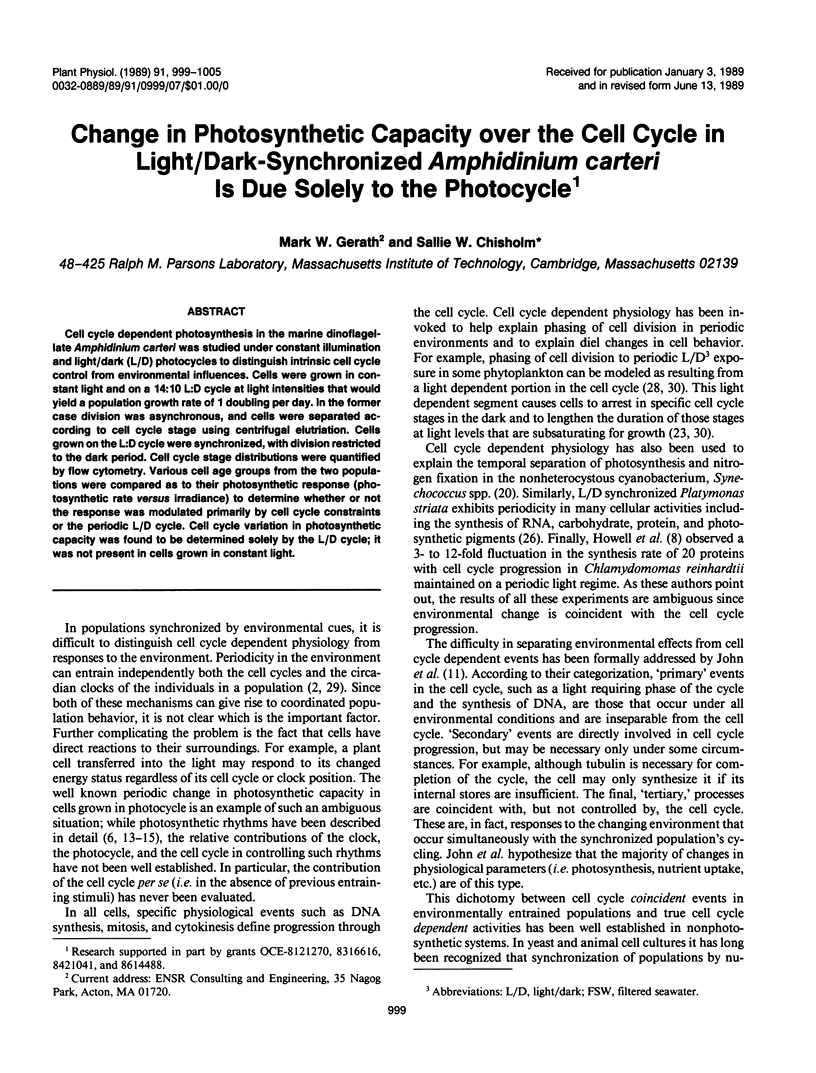
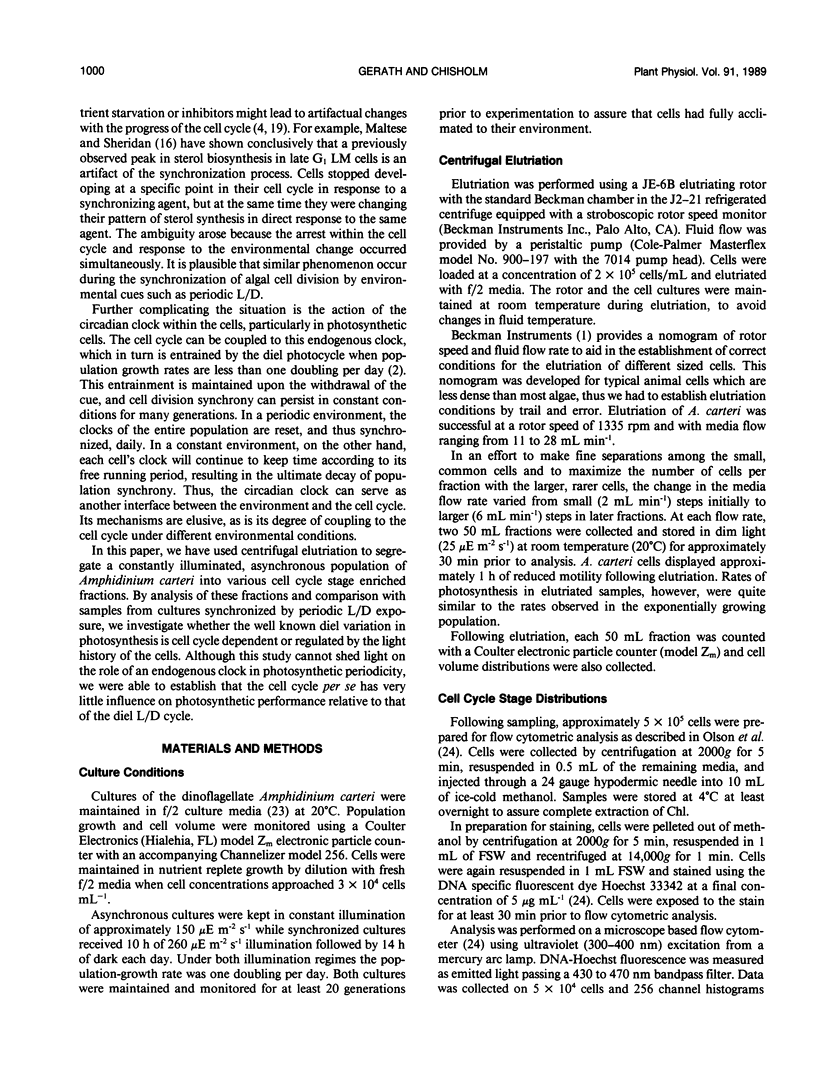

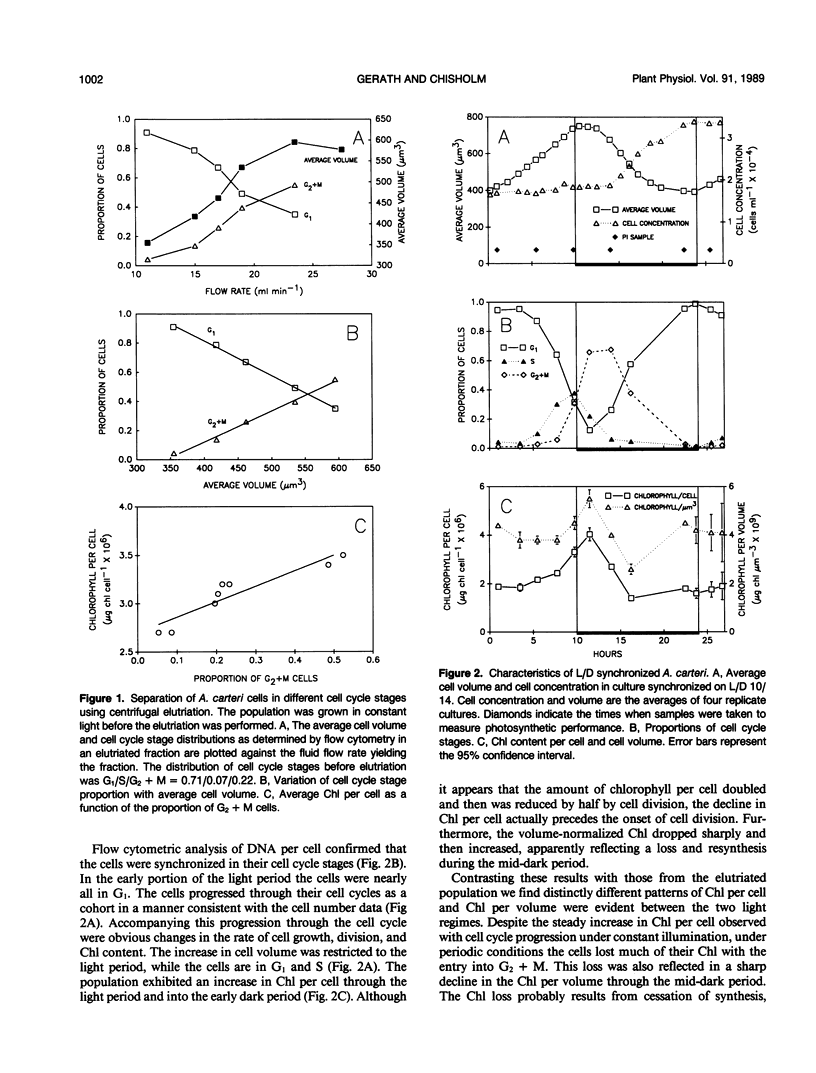
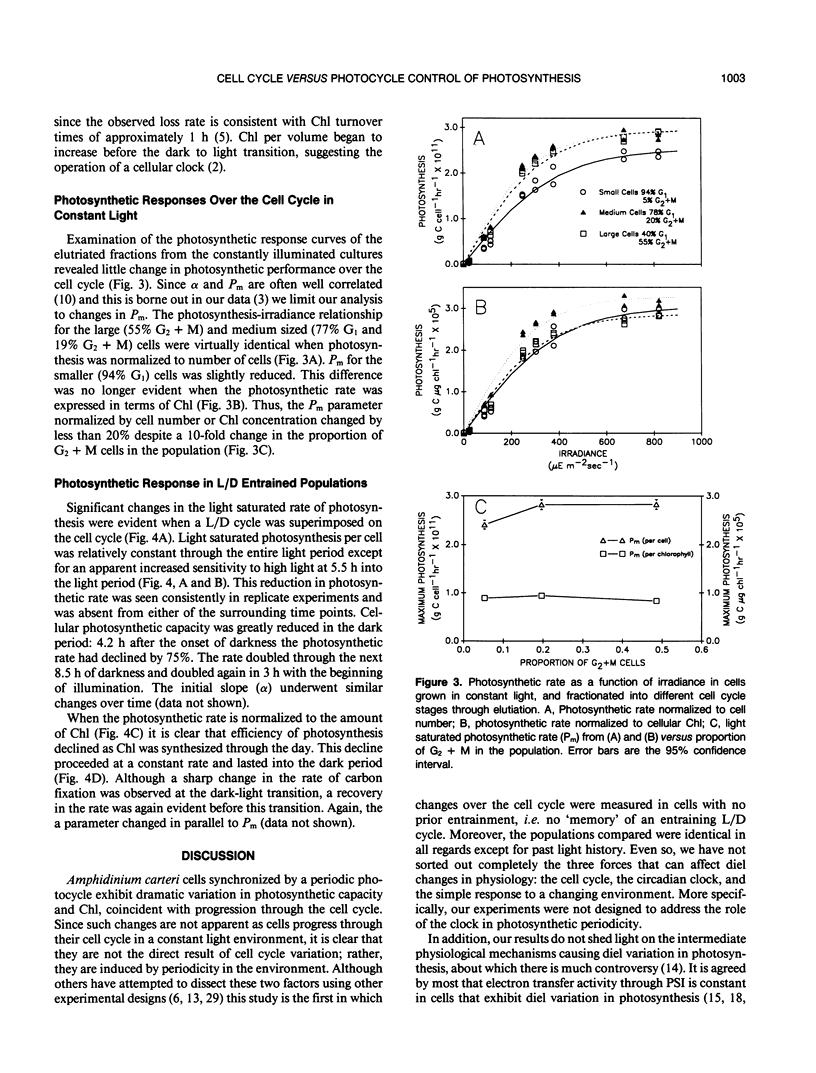
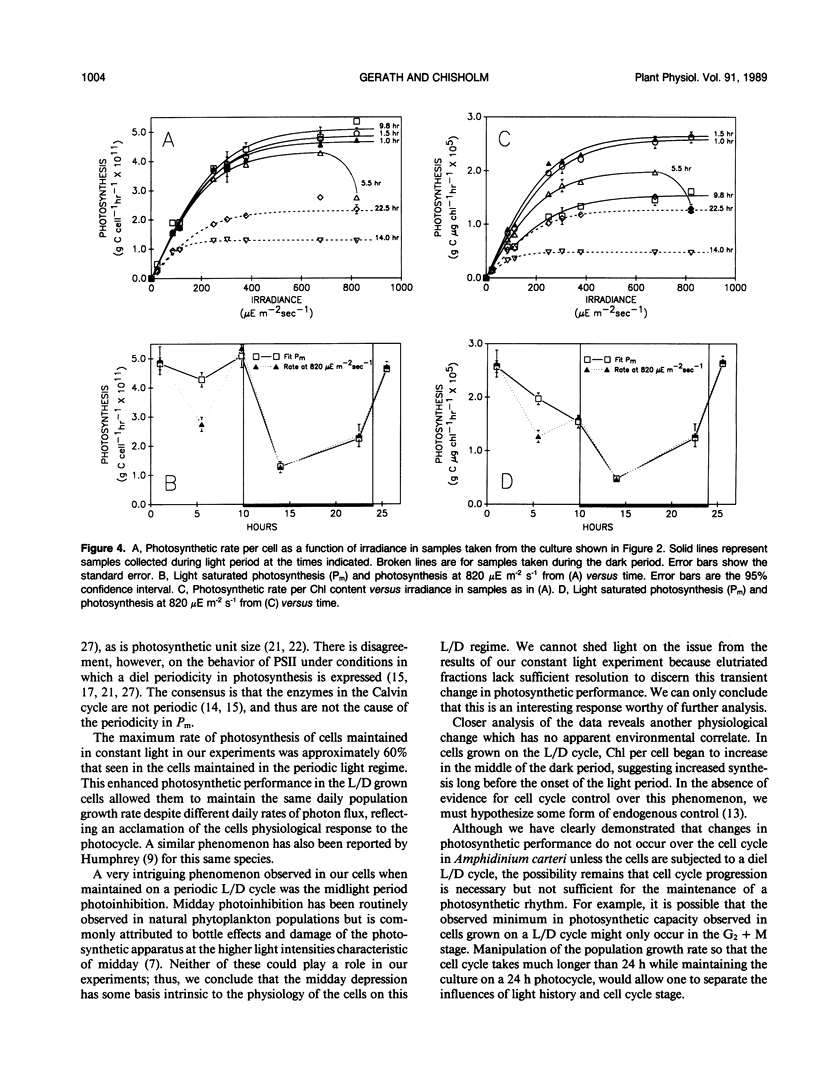
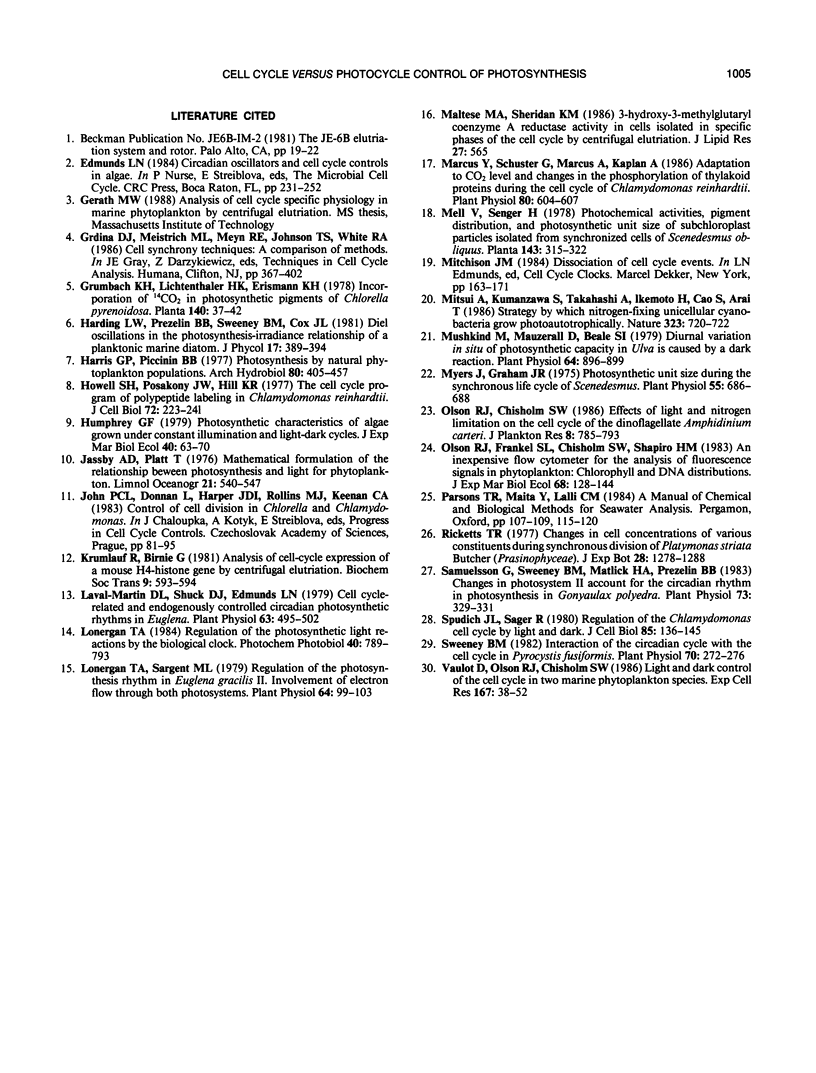
Selected References
These references are in PubMed. This may not be the complete list of references from this article.
- Howell S. H., Posakony J. W., Hill K. R. The cell cycle program of polypeptide labeling in Chlamydomonas reinhardtii. J Cell Biol. 1977 Feb;72(2):223–241. doi: 10.1083/jcb.72.2.223. [DOI] [PMC free article] [PubMed] [Google Scholar]
- Krumlauf R., Birnie G. Analysis of the cell-cycle expression of a mouse H4-histone gene by centrifugal elutriation. Biochem Soc Trans. 1981 Dec;9(6):593–594. doi: 10.1042/bst0090593. [DOI] [PubMed] [Google Scholar]
- Laval-Martin D. L., Shuch D. J., Edmunds L. N. Cell Cycle-related and Endogenously Controlled Circadian Photosynthetic Rhythms in Euglena. Plant Physiol. 1979 Mar;63(3):495–502. doi: 10.1104/pp.63.3.495. [DOI] [PMC free article] [PubMed] [Google Scholar]
- Lonergan T. A., Sargent M. L. Regulation of the Photosynthesis Rhythm in Euglena gracilis: II. Involvement of Electron Flow through Both Photosystems. Plant Physiol. 1979 Jul;64(1):99–103. doi: 10.1104/pp.64.1.99. [DOI] [PMC free article] [PubMed] [Google Scholar]
- Marcus Y., Schuster G., Michaels A., Kaplan A. Adaptation to CO(2) Level and Changes in the Phosphorylation of Thylakoid Proteins during the Cell Cycle of Chlamydomonas reinhardtii. Plant Physiol. 1986 Feb;80(2):604–607. doi: 10.1104/pp.80.2.604. [DOI] [PMC free article] [PubMed] [Google Scholar]
- Mishkind M., Mauzerall D., Beale S. I. Diurnal variation in situ of photosynthetic capacity in ulva is caused by a dark reaction. Plant Physiol. 1979 Nov;64(5):896–899. doi: 10.1104/pp.64.5.896. [DOI] [PMC free article] [PubMed] [Google Scholar]
- Myers J., Graham J. R. Photosynthetic Unit Size during the Synchronous Life Cycle of Scenedesmus. Plant Physiol. 1975 Apr;55(4):686–688. doi: 10.1104/pp.55.4.686. [DOI] [PMC free article] [PubMed] [Google Scholar]
- Samuelsson G., Sweeney B. M., Matlick H. A., Prézelin B. B. Changes in Photosystem II Account for the Circadian Rhythm in Photosynthesis in Gonyaulax polyedra. Plant Physiol. 1983 Oct;73(2):329–331. doi: 10.1104/pp.73.2.329. [DOI] [PMC free article] [PubMed] [Google Scholar]
- Spudich J. L., Sager R. Regulation of the Chlamydomonas cell cycle by light and dark. J Cell Biol. 1980 Apr;85(1):136–145. doi: 10.1083/jcb.85.1.136. [DOI] [PMC free article] [PubMed] [Google Scholar]
- Sweeney B. M. Interaction of the Circadian Cycle with the Cell Cycle in Pyrocystis fusiformis. Plant Physiol. 1982 Jul;70(1):272–276. doi: 10.1104/pp.70.1.272. [DOI] [PMC free article] [PubMed] [Google Scholar]
- Vaulot D., Olson R. J., Chisholm S. W. Light and dark control of the cell cycle in two marine phytoplankton species. Exp Cell Res. 1986 Nov;167(1):38–52. doi: 10.1016/0014-4827(86)90202-8. [DOI] [PubMed] [Google Scholar]


